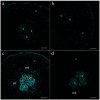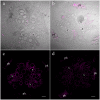The Long-Distance Transport of Jasmonates in Salt-Treated Pea Plants and Involvement of Lipid Transfer Proteins in the Process
- PMID: 39000596
- PMCID: PMC11242760
- DOI: 10.3390/ijms25137486
The Long-Distance Transport of Jasmonates in Salt-Treated Pea Plants and Involvement of Lipid Transfer Proteins in the Process
Abstract
The adaption of plants to stressful environments depends on long-distance responses in plant organs, which themselves are remote from sites of perception of external stimuli. Jasmonic acid (JA) and its derivatives are known to be involved in plants' adaptation to salinity. However, to our knowledge, the transport of JAs from roots to shoots has not been studied in relation to the responses of shoots to root salt treatment. We detected a salt-induced increase in the content of JAs in the roots, xylem sap, and leaves of pea plants related to changes in transpiration. Similarities between the localization of JA and lipid transfer proteins (LTPs) around vascular tissues were detected with immunohistochemistry, while immunoblotting revealed the presence of LTPs in the xylem sap of pea plants and its increase with salinity. Furthermore, we compared the effects of exogenous MeJA and salt treatment on the accumulation of JAs in leaves and their impact on transpiration. Our results indicate that salt-induced changes in JA concentrations in roots and xylem sap are the source of accumulation of these hormones in leaves leading to associated changes in transpiration. Furthermore, they suggest the possible involvement of LTPs in the loading/unloading of JAs into/from the xylem and its xylem transport.
Keywords: Pisum sativum L.; immunoblotting; immunolocalization; jasmonates; lipid transfer proteins; long-distance transport; xylem sap.
Conflict of interest statement
The authors declare no conflicts of interest.
Figures






Similar articles
-
Role of Pea LTPs and Abscisic Acid in Salt-Stressed Roots.Biomolecules. 2019 Dec 20;10(1):15. doi: 10.3390/biom10010015. Biomolecules. 2019. PMID: 31877653 Free PMC article.
-
Transport and accumulation rates of abscisic acid and aldehyde oxidase activity in Pisum sativum L. in response to suboptimal growth conditions.J Exp Bot. 2001 Jun;52(359):1269-76. J Exp Bot. 2001. PMID: 11432945
-
Differential xylem phytohormone export from dry and wet roots during partial rootzone drying is independent of shoot-to-root transport in soybean.Physiol Plant. 2025 May-Jun;177(3):e70252. doi: 10.1111/ppl.70252. Physiol Plant. 2025. PMID: 40302147 Free PMC article.
-
Metabolism, signaling, and transport of jasmonates.Plant Commun. 2021 Aug 11;2(5):100231. doi: 10.1016/j.xplc.2021.100231. eCollection 2021 Sep 13. Plant Commun. 2021. PMID: 34746762 Free PMC article. Review.
-
Multiple Roles of Jasmonates in Shaping Rhizotaxis: Emerging Integrators.Methods Mol Biol. 2020;2085:3-22. doi: 10.1007/978-1-0716-0142-6_1. Methods Mol Biol. 2020. PMID: 31734913 Review.
References
-
- Jackson M. Hormones from roots as signals for the shoots of stressed plants. Trends Plant Sci. 1997;2:22–28. doi: 10.1016/S1360-1385(96)10050-9. - DOI
-
- Davies W.J., Zhang J. Root signals and the regulation of growth and development of plants in drying soil. Annu. Rev. Plant Physiol. Plant Mol. Biol. 1991;42:55–76. doi: 10.1146/annurev.pp.42.060191.000415. - DOI
MeSH terms
Substances
Grants and funding
LinkOut - more resources
Full Text Sources
Miscellaneous

